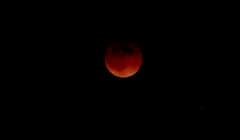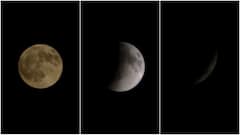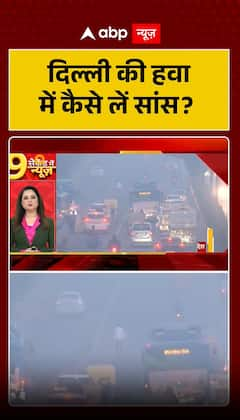EXPLAINED | Rain At Greenland Summit For First Time. Know Why This Is A Cause For Worry
It rained at the Greenland ice sheet — the world's second-largest after Antarctica's — for several hours on August 14, and this has sent alarm bells ringing.

It rained for several hours at the highest point on the Greenland ice sheet, more than 500 miles above the Arctic Circle, last week. This has happened for the first time on record, and sent alarm bells ringing.
The rain at the research station is a worrying sign of global warming as the ice sheet — the world's second-largest after Antarctica's — is already melting at an increasing rate, scientists have pointed out.
According to reports, it was not a drizzle but it poured and temperatures rose slightly above freezing. Water is warmer than the usual snow, and it absorbs more sunlight than reflecting it away, experts say.
“...it does write a new chapter in the book of Greenland,” The New York Times quoted Marco Tedesco, a researcher at Lamont-Doherty Earth Observatory of Columbia University, as saying.
Scientists claim the Arctic is warming faster than any other region on Earth, and the melting ice is streaming into the ocean, which is causing the sea levels to rise.
"Water on ice is bad. … It makes the ice sheet more prone to surface melt," Indrani Das, a glaciologist with Columbia University's Lamont-Doherty Earth Observatory, told Reuters.
Greenland's melting ice sheet has already caused around 25 per cent of sea level rise globally over the last few decades, scientists estimate, and expect that share to grow as temperatures increase, the Reuters report said.
A First In Recorded History
The research station at the frigid high point of the Greenland ice sheet is called Summit, and the US’ National Science Foundation has a presence there all year round. The observations began in the 1980s, and there has been no record of rain since.
Computer simulations show no evidence of rain prior to that either, NYT quoted Thomas Mote, a climate scientist at the University of Georgia, as saying.
According to scientists at the US National Snow and Ice Data Center, it rained for several hours at the 3,216-metre Summit on August 14 and temperatures remained above freezing for around nine hours.
Over three days, from August 14-16, a total of 7 billion tonnes of rain fell across Greenland — the largest amount in recorded history that began in 1950.
The rain coupled with high temperatures triggered extensive melting and the island suffered a surface ice mass loss on August 15, which was seven times above the average for mid-August, Reuters reported.
The rain was caused by air circulation patterns, scientists said, adding that this meant warm, moist air temporarily covered the island.
Why This Is A Matter Of Concern
Temperatures rising the above-freezing limit has been almost rare at the ice sheet.
Ice cores showed above-freezing conditions had occurred only six times in the last 2,000 years, before this century began, NYT quoted Martin Stendel, a senior researcher at the Danish Meteorological Institute, as saying.
But this has now happened three times in less than 10 years — in 2012, 2019 and this year.
Along with rising floods, fires, and other extremes being witnessed across the globe, the rain at Greenland Summit is one of the many "alarm bells" pointing to the need to reduce greenhouse gas emissions, Twila Moon, deputy lead scientist with the US National Snow and Ice Data Center, said in the Reuters report.
"We really have to stay laser-focused on adapting, as well as reducing the potential for those to become truly devastating," she added.
The Greenland ice sheet is two miles thick and covers about 650,000 square miles.
Its surface gains mass every year as the accumulation of snowfall is greater than surface mass that melts. But overall, it loses more ice when the icebergs break off and when the sheet meets the ocean. On an average, reports say, Greenland has lost more than 300 billion tonnes of ice every year over the past two decades.
The August 14 warming caused more than 50 per cent of the ice sheet surface to melt.
Though Dr Mote called these melting episodes “one-off” events, he cautioned: “...these events seem to be happening more and more frequently. And that tells the story that we are seeing real evidence of climate change in Greenland.”
And if this is happening at the Summit, the effect will be more violent at lower elevations, said Dr Tedesco.
He described the rain as “worrisome”, saying it shows even a little warming could affect the Arctic region. "Half a degree of warming can really change the state of the Arctic because you can go from frozen to liquid."
Melting could cause the ice surface to darken, and modify the underlying snow and firn, which can trigger future melting and runoff “even under normal atmospheric conditions”, NASA Earth Observatory observed.






































